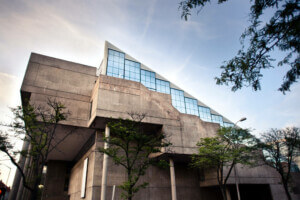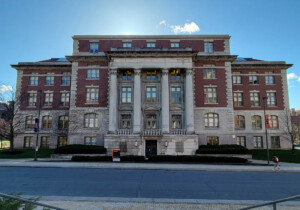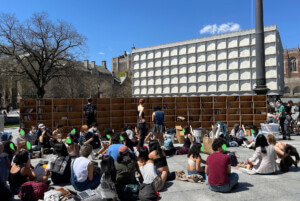Nearly a century after Le Corbusier proposed his now-famous five points of architecture, I proposed five points toward the decolonization of architecture as part of the exhibition Cairo Modern. These new points are intentionally anti-aesthetic, and they criticize the ways in which the history of architecture that centered figures such as Le Corbusier has in fact led to waves of erasure of modes of building across the world by colonial and so-called “postcolonial” regimes. Colonialism manifests in the control of spaces and spatial narratives. In a sociopolitical economic system based on debt, austerity, material extraction, silenced minorities in metropolitan countries, and besieged populations governed by neocolonial regimes elsewhere, what does the conversation about decolonizing of architecture look like?
Capitalism, colonialism, and white supremacy are deeply connected historically, and today, though conversations that use such terminology outside of the academy are curtailed (and in some cases censored), they’re practically nonexistent in architecture schools. It is difficult for immigrants like myself to have to explain to privileged Americans their position and responsibility in the ongoing neocolonial system that made me an immigrant in the first place.
Paradoxically, while recognition of contemporary forms of colonization is obscured or frowned upon, Western art and academic institutions, particularly those founded as settler colonies, have monopolized debates about decolonization. One can’t decolonize one’s own institution without recognizing its extant colonization. Demands for decolonization discourse has been triggered by local and national activism, such as the Black Lives Matter. Despite this palpable evidence, colonialism in the museum and university is discussed at a temporal or spatial distance with its immediacy made invisible.
In response, The New York Times suggested “taking an ax” to museums to decolonize them, while Museum Next defined the process as “part of the training of all staff, including those who greet and educate visitors, and even determines what is sold in the gallery stores” and by including Indigenous peoples in all decisions. On the education scene, Chris T. Cornelius, an architecture professor and citizen of the Oneida Nation of Wisconsin, proposed changing curricula to acknowledge Indigenous histories and architectures. Meanwhile, Lynn Maranda, a curator in Vancouver, wrote that the museum itself is a “colonizing fact.”
The university, too, is a colonizing fact. International students paying handsome sums to attend universities in the U.S. are sent back to the “Global South” to collect data that then gets published in the West as an effort at producing a “global history of architecture,” while other students seek to use their education to return to their countries to work as agents of Western firms, fully assimilated as neocolonial subjects.
As an extension of the university and the museum, architectural knowledge produced in Western institutions over the past several centuries during processes of violent colonization and exploitation has assembled an argument, with force, that modernity belongs to the West, erasing its colonial foundation and the participation of many non-Europeans with their labor, resources, and history of ideas in its making. Concurrently, expressions of modernity elsewhere were belittled and even ridiculed: In his still-circulating 1982 textbook Modern Architecture Since 1900, William J.R. Curtis describes those from non-Western societies who studied in the West and returned to practice in their countries as the “brainwashing of post-colonial elites.”
A key feature of colonial histories of architecture is the minimization of all that does not fit within a European point of reference (Eurocentrism), which paves the way for the erasure of that which does not satisfy the Eurocentric imagination.
William Curtis’s book has been translated and read by students of architecture around the world, including in Egypt, where locally produced textbooks on national and regional architectural developments in the 20th century often do not exist. Producing “global” histories of architecture from elite institutions has not successfully decolonized anything. It is an additive project: It does not fundamentally scrutinize the structure of existing knowledge; it simply adds to it. Inclusion here locates the assignment of value to the selected buildings as emanating from knowledge centers like Cambridge, Massachusetts, or elsewhere, but never from local communities. This is exacerbated by the global economy that evaluates markets and real estate from the vantage points of London and New York.
The invention of “primitivism” as a counterpoint to Western notions of material progress go hand-in-hand with this expert credentialing. However, the accelerating climate catastrophe raises a fundamental question about the definitions of such terminologies. What if we could reframe “the primitive” in the following way: What would a reading of the world today, including its architectures, look like if, detached from materiality, primitivism was redefined to signify an inability to emotionally connect with nature? If architectural history centers this question, it would look very different.
The words colonial and propaganda are frowned upon in today’s public discourse. Propaganda has morphed into the more acceptable public relations, while colonialism is dispatched as a concern of the past. The word colonial appeared often in Western discourses until World War II. Today’s wars about the so-called spread of democracy, a process with immense human and architectural damage, are not presented as colonial. In his 1923 essay “The Iron Wall,” Vladimir Jabotinsky wrote, “Every native population in the world resists colonists as long as there is the slightest hope of being able to rid itself of the danger of being colonized.” He was speaking about the colonization of Palestine and the necessary use of violent military force to carry out such a process, which erased entire Palestinian villages and looked to redesign and rewrite the history of Palestinian cities. Jabotinsky was looking at successful Western colonial tactics and maneuvers to make an argument for his own colonial project in which the erasure of native architecture and the belittling of its value and meaning is fundamental. The word colonization was openly used in such discourses, a transparency not to be found in contemporary political discourse in the polite age of public relations.
After World War II the onset of anticolonial movements arrived, marking symbolic and very short-term experiences of decolonization around the colonial world. Within a decade of the decolonization of Africa, nearly every first democratically elected president was replaced in coups orchestrated by colonial powers carried out by neocolonial local regimes, concealed as national figures. This affected the ways in which architecture was built, erased, or mutated, its memory obliterated. For example, in the Congo, in 1885 Belgian King Leopold II established the Free Congo State, effectively taking the entire territory as a private possession for his exploitation. In 1960, the country gained independence, and Patrice Lumumba was its first elected Prime Minister. A year later, he was assassinated in a coup orchestrated by American and Belgian intelligence. Today, the Congo is one of the world’s poorest countries despite being rich in resources, such as lithium and cobalt, elements that run our modern technologies. The Congo’s architecture will not be seen in “global” histories produced in the west.
Similarly, in 1965 Ghana’s first freely elected president Kwame Nkrumah sought the unification of Africa to repair colonial divisions but was overthrown in 1966. Many of these short-lived African administrations had quickly initiated architectural programs to rebuild their countries, but with the coups and assassinations such ambitions were demolished.
In the 2018 documentary film The Spider’s Web: Britain’s Second Empire, researchers focusing on Britain, history’s largest colonial empire, show how decolonization never really happened. Rather, former colonies were transitioned, often via military interventions, to an invisible colonial system in which economic and political interests and networks were maintained through local surrogates (often military dictators), with captive populations trapped within colonial borders and an outflow of cash and resources from former colonies to capitalist powers.
Where does this ongoing history enter the current conversation on decolonization within the museum and the university in the West? What does it take to decolonize architecture in contemporary practice and in history? Decolonizing museums and architecture schools will require going far beyond representational diversification of content. The act requires a structural upheaval of the institutions which have been designed to serve a certain economy and cultural dominance.
It is within this deep context that I propose a consciously provisional reading of history and five points toward decolonizing architecture to be used in history writing and in contemporary architectural practice:
- Recognize that history is never a linear progression of figures, events, buildings, or styles.
- Recognize the impact of colonialism in its past and present forms on architectural production, on the fate of architectural heritage, on the fate or archives, and on the capacity to write architectural history, both in the colony and in the metropole.
- “The only primitivism is Eurocentrism”
- Decenter architectural knowledge production, support the building of independent architectural institutions in former and present colonies.
- In a global economy, “meaning” and “value” in postcolonial contexts are often assigned from the colonial center, maintaining a center-periphery dynamic. Restore the production of “meaning” and “value” to local communities.
These five points—and others that may be proposed in the future—apply to decolonizing Cairo, Khartoum, Detroit, or anywhere where the sociopolitical economic system has removed the production of meaning and value from local communities to take on the interests of politicians and bankers. Decolonization is a structural process, not a representational one. No serious conversation around the decolonization of architecture, in history or in contemporary practice, can begin without widespread critical understanding of how race and representation are operative in empire, capitalism, and colonialism.
Mohamed Elshahed is an independent writer, curator, and critic of architecture. He is the author of Cairo Since 1900: An Architectural Guide (AUC Press, 2020) and was the curator of Cairo Modern at New York’s Center for Architecture (October 2021–March 2022). He resides in Mexico City.











